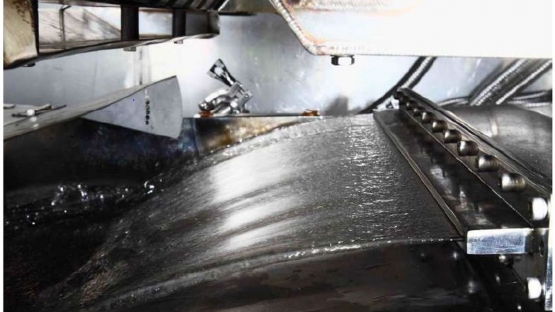Significant advances have been achieved in understanding radiation treatment techniques for wastewater, thanks to a recently completed IAEA coordinated research project (CRP - F23029 - Radiation Treatment of Wastewater for Reuse with Particular Focus on Wastewaters Containing Organic Pollutants). This project aimed to improve Member State capacity to treat water at the industrial scale, particularly when it is contaminated with organic pollutants.
Some critical knowledge gaps motivated this CRP. In order to safely and efficiently implement radiation treatment techniques for wastewater on a large scale, knowledge of how organic pollutants respond to radiation under various conditions, and how those interactions may impact the environment, had to be understood.
This project not only demonstrated that ionizing radiation can be an efficient and safe tool for treating toxic organic pollutants, it has also led to the introduction of new radiation treatment facilities in Member States, and to a significant output of scientific scholarship (including 64 peer reviewed journal articles and 36 conference presentations).
Fourteen Member States collaborated on this CRP. The introduction of a new electron beam treatment plant in China was a prime example of effective technology transfer between Member States. The Republic of Korea demonstrated the economic and technical feasibility of electron beam treatment techniques in a textile dyeing complex. China has been able to construct its own similar facility on an industrial scale. The estimated treatment capacity of this new facility is 3000 cubic litres per day.
“The procedures and technical requirements for treating wastewater effectively at scale are still being developed,” said Sunil Sabharwal, the scientific secretary of the project. “This CRP has contributed a lot to our understanding of how to use radiation to deal with some particularly unyielding pollutants.”
One of the greatest benefits of successful techniques for wastewater treatment, particularly on these large scales, is that the water can be reused. As water resources deplete, and new threats to the global fresh water supply emerge, implementing radiation-based techniques that allow for treatment of wastewater on the industrial and agricultural scales presents a huge opportunity.
The collaboration made possible by this CRP brought scientists from around the world together to help understand and develop those solutions. Of course, more work is still needed in several related areas, which can build upon the knowledge created by this project.
Some examples of key areas for future research include: the development of new techniques for measuring eco-toxicity, the creation of new methods for processing solids like sediments and sludge, and the improving of information related to the treatment of wastewater contaminated with ‘extremely recalcitrant’ biological and chemical pollutants.


